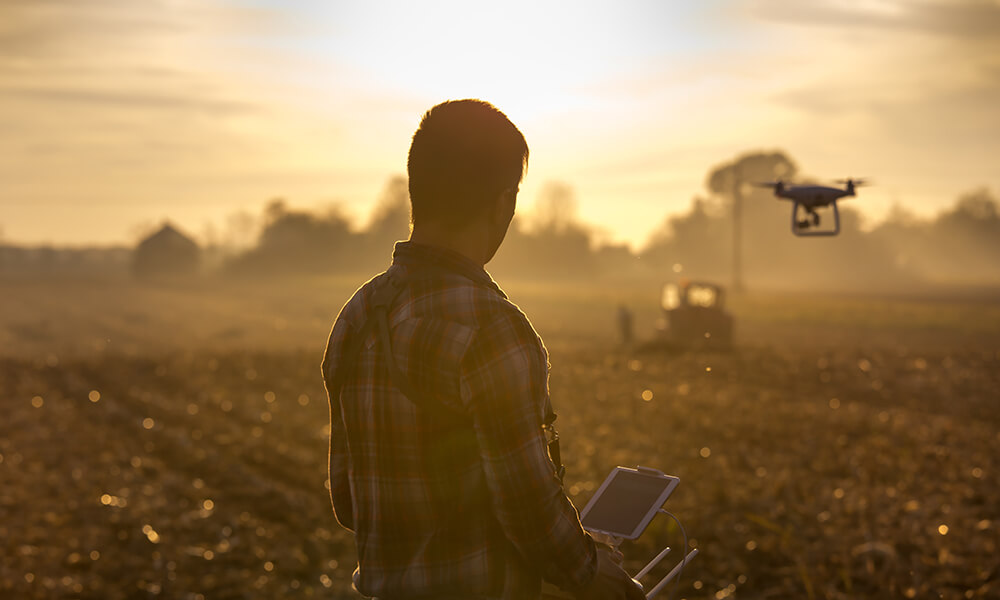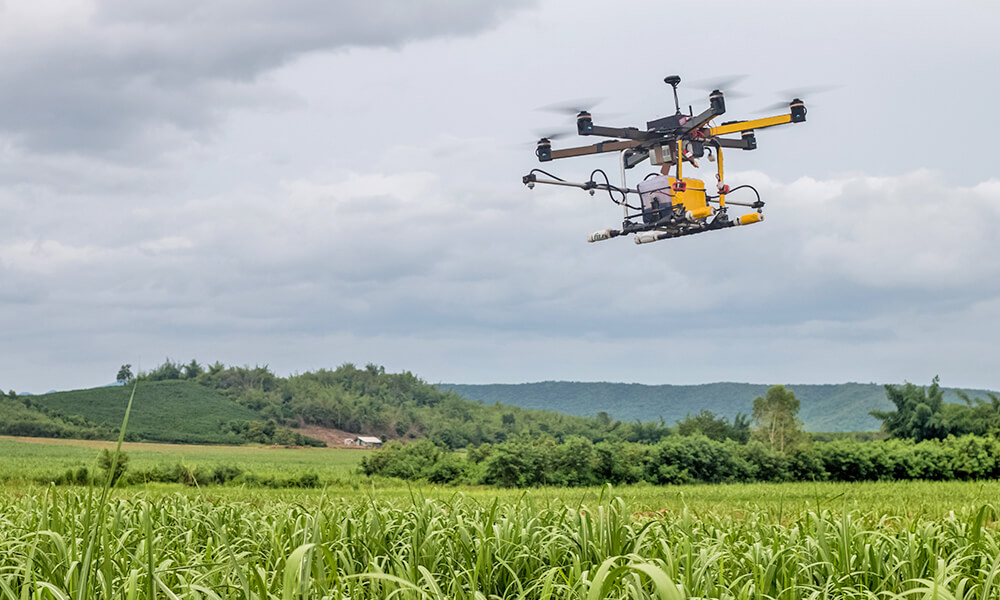Drones: Bringing Tech to the Field
Drones are widely considered to be one of the most exciting multipurpose innovations of the century. There are many uses for drones in tons of different industries, but drones can especially aid the efficiency of work in the agriculture industry. They can conduct soil health scans, monitor crop health, apply fertilizers, water fields, track weather, and estimate yields, and then collect the data and analyze it for prompt action. By using drones to do all of these things a farmer can be more efficient and effective in their practice. It also helps eliminate human error, thereby providing more reliable data to farmers.

Dronefly, a leading distributor in commercial drones, released a press release that explained the four main uses of drones in the agriculture industry. They are: crop field mapping and surveying with near infrared camera sensor equipped drones, crop dusting and spraying with a crop spraying drone, irrigation management by thermal camera equipped drones, and livestock monitoring with thermal-imaging camera-equipped drones.
Crop field Mapping and Surveying
Using a drone that has near infrared camera sensors can help analyze photosynthesis and plant health. The drone sees the spectrum of light that plants use to go through photosynthesis and, by being able to look at this, farmers can better understand plant health. Drones can also create GPS maps of fields which can help farmers plan where to plant crops in order to maximize the use of land, water, and fertilizer. In the past, aircrafts were used to survey fields, and it was very expensive because you have to not only pay for fuel, but also for a pilot. Using drones is much more cost effective and is more helpful for farmers as they can survey their fields more often because if they invest in their own drone, they can survey their fields as often as they wish!
Crop Dusting and Spraying
Crop dusting and spraying is typically done by manually driving an airplane through a field to spray or crop dust. Now, this can be done with drones. The drones have liquid storage reservoirs that are used to spray and crop dust which can be automatically operated. This make operating them much safer than the airplane method. This is also more cost effective than manually operating an airplane to spray and crop dust.

Irrigation Management with Drones
Drones for irrigation management use thermal cameras to help provide insight, highlighting areas of pooling water or dry soil. By having insight into every area of their field, farmers can better understand the circumstances aiding or inhibiting their crops’ growth and change aspects of their practice to help maximize both yield and quality. Using drones to manage irrigation can also allow farmers to check in more frequently which is crucial in times of extreme or unusual weather.
Livestock Monitoring
Drones use thermal imaging cameras and a single remote pilot to monitor livestock. Having this camera constantly on the livestock allows the remote pilot to check in on the livestock at all times to see if any animals are injured, missing, or birthing. This helps keep the livestock safe and can help the farmer result in greater profits.
Overall, drones can help increase the efficiency of the agriculture industry, minimize costs, and minimize the amount of errors made. What other ways do you know of that drones can help the agriculture industry? Let us know in the comments! If you’re looking to ensure the quality of your yield this year, start by insuring it correctly. For information on crop insurance policies for Nebraskan farms, call Crop Insurance Solutions today.
